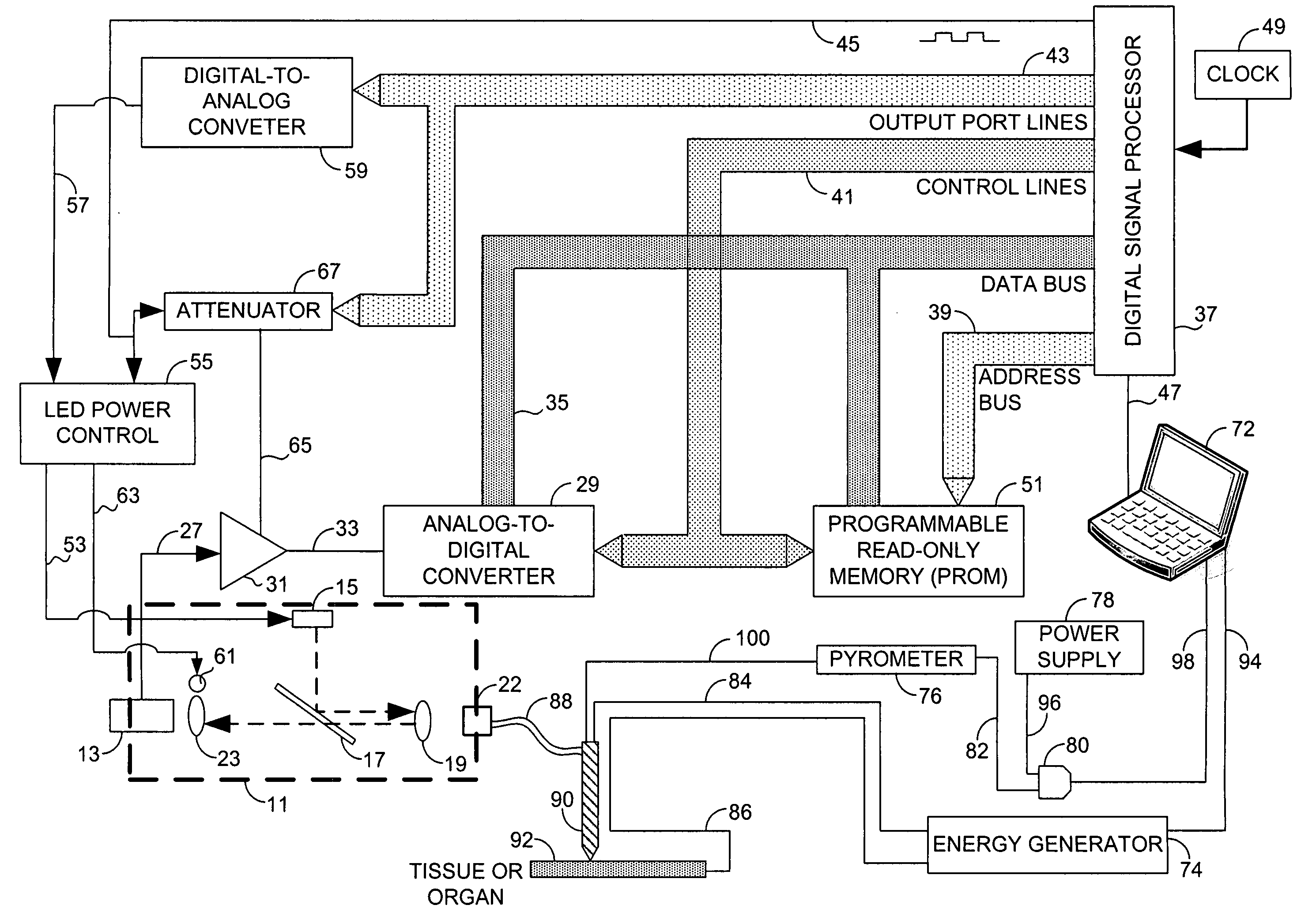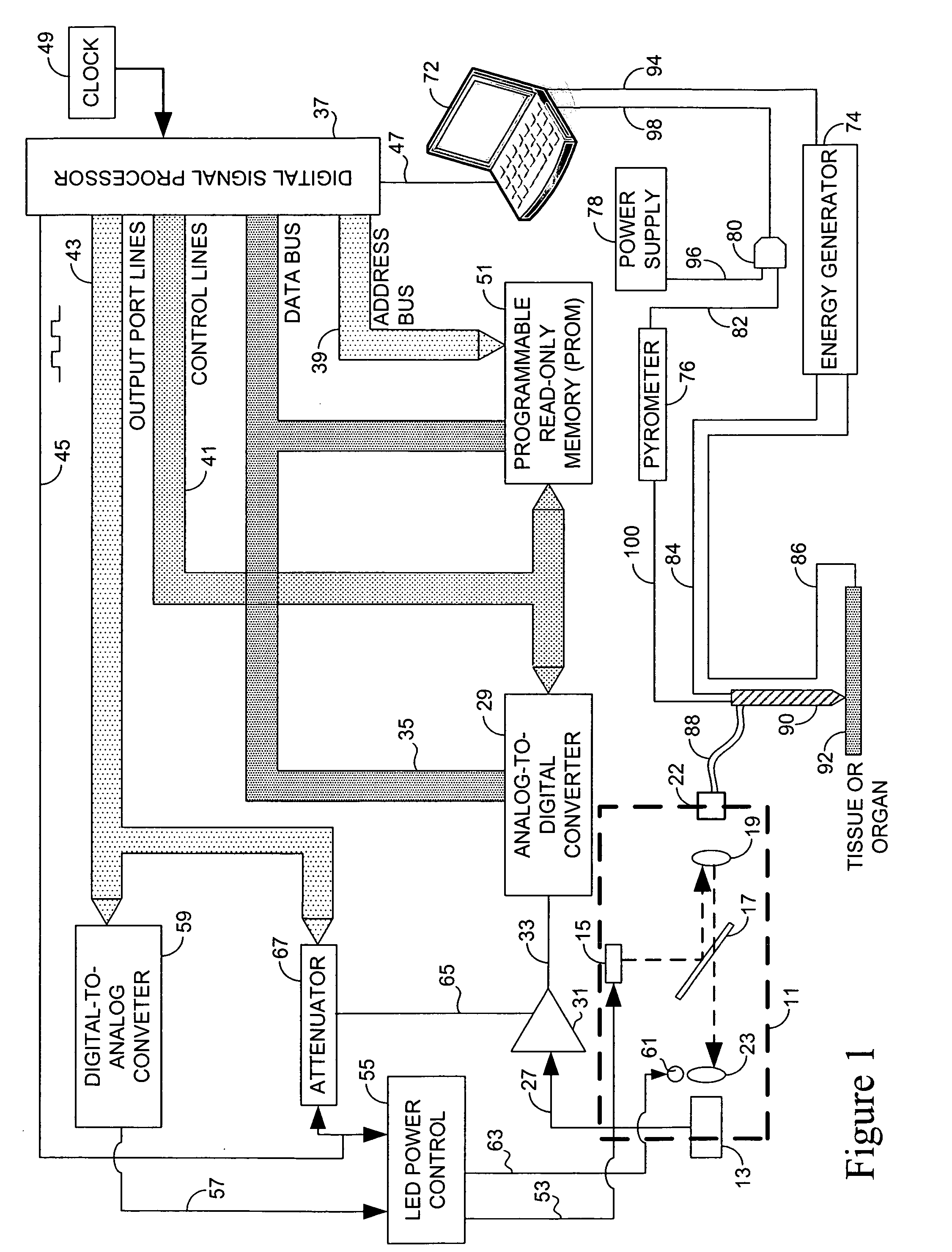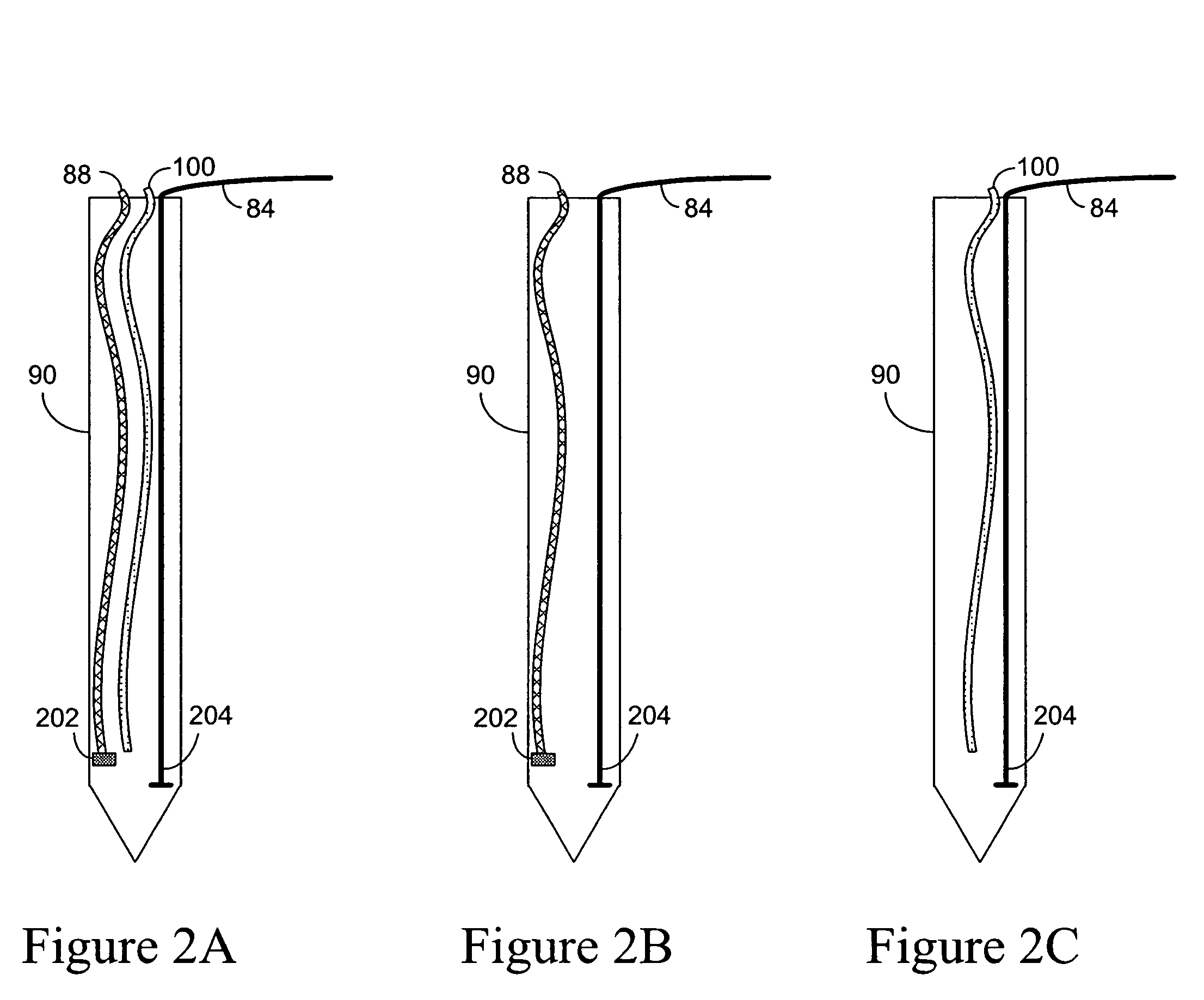Systems and methods for monitoring temperature during electrosurgery or laser therapy
a technology applied in the field of electrosurgical and laser therapy, can solve the problems of liver tumor recurrence, incomplete necrosis of tissue surrounding the vessel, and the failure of conventional electrosurgical devices and procedures
- Summary
- Abstract
- Description
- Claims
- Application Information
AI Technical Summary
Benefits of technology
Problems solved by technology
Method used
Image
Examples
Embodiment Construction
[0030]Radiofrequency ablation (RFA) is used for local tissue ablation. See Decadt and Siriwardena, 2004, “Radiofrequency ablation of liver tumors: systematic review,” Lancet Oncol 5, 550-560, which is hereby incorporated by reference. In RFA, a needle electrode (e.g., 14-17.5 G) with an insulated shaft and a non-insulated distal tip is inserted into or over a lesion, often with imaging-guidance. For example, the physician may be guided in the placement of the needle by images from an imaging provided by ultrasound, a CT scanner, or magnetic resonance. In some procedures, once the needle is in place, tines are deployed from the hollow core of the needle. These tines penetrate the tissue. The patient is made into an electrical circuit by placing grounding pads in appropriate places (e.g. on the thighs or back muscles). RFA energy is then sent through the needle and tines, destroying the tissue.
[0031]Radiofrequency ablation is an attractive tool for cancer patients, especially for live...
PUM
 Login to View More
Login to View More Abstract
Description
Claims
Application Information
 Login to View More
Login to View More - R&D
- Intellectual Property
- Life Sciences
- Materials
- Tech Scout
- Unparalleled Data Quality
- Higher Quality Content
- 60% Fewer Hallucinations
Browse by: Latest US Patents, China's latest patents, Technical Efficacy Thesaurus, Application Domain, Technology Topic, Popular Technical Reports.
© 2025 PatSnap. All rights reserved.Legal|Privacy policy|Modern Slavery Act Transparency Statement|Sitemap|About US| Contact US: help@patsnap.com



